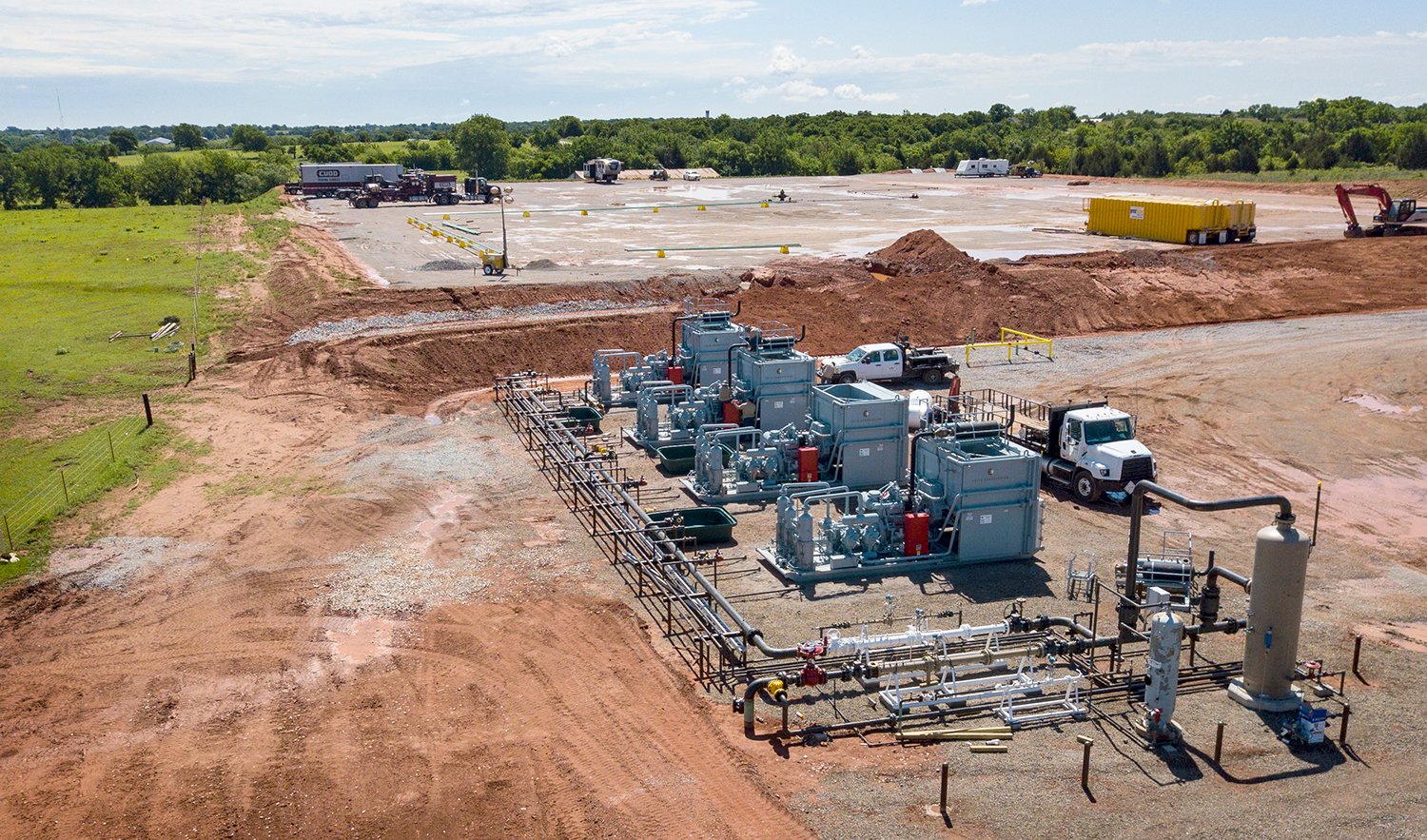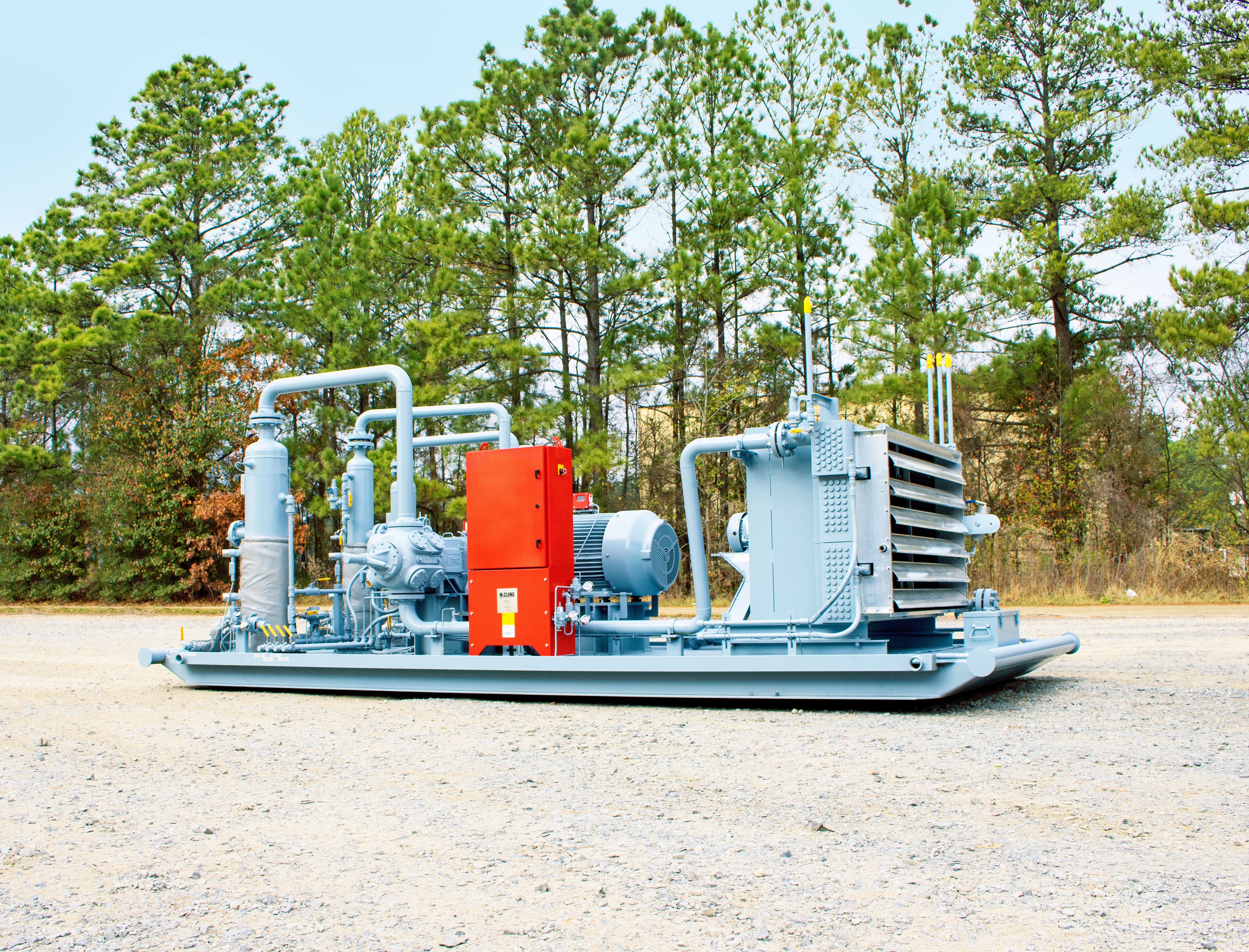A Brief History of High Pressure Gas Lift
THE BEGINNINGS OF GAS LIFT
Introduced to the oil & gas industry as early as 1864 (with natural gas reducing explosion risks upon its market arrival in 1920), artificial lift methods facilitate fluid production from a reservoir. The process includes the injection of natural gas through the tubing-casing annulus. This gas is injected continuously or intermittently, into the tubing through valves in the mandrels. The goal is to reduce the weight of the hydrostatic column in the wellbore, reducing the bottom hole pressure (BHP) and thereby increasing the rate of fluid influx from the reservoir. By aerating the fluid and reducing its density, the formed pressure lifts the oil column, forcing the fluid out of the wellbore.
When reservoir pressures drop too low, the well can no longer overcome the weight of the hydrostatic column. At this point, production is slow and ceases to be economical. Another case where artificial lift is necessary is when liquid loading occurs. During loading, reservoir fluids cannot enter the wellbore due to the hydrostatic pressure of the liquid column. Well production slows or ceases, and artificial lift systems are required
High-Pressure Gas Lifts vs Traditional Gas Lifts
According to the Oilfield Review, “Unfortunately, traditional gas lift technologies have design limitations, such as limits on the gas-injection rate for stable tubing and casing fluid flow, low maximum operating pressure and unreliable back pressure systems. These constraints prevent conventional gas lift methods from meeting the safety requirements in high-pressure operations, and preclude their use in a significant number of today’s deepwater and subsea completions.” Additionally, conventional gas lifts contribute to frictional losses associated with tubing flow rates.
The ability for horizontal wells to reverse flows with high rates, high-pressure gas-lifts were made possible due to new infrastructure designs meant to meet the needs of the hydraulic fracturing industry. These changes included improving compressor technology to handle up to 6000 psi intended to support CNG fuel and elevated casing pressure ratings to well over 10,000 psi. These upgrades reinforced the wells and tubing, allowing them to handle high-pressure applications thus furthering the economic implementation of High-Pressure Gas Lifts (HPGL). HPGL is a more reliable, less complicated and cheaper alternative for onshore, unconventional oil and gas wells. The alternative to conventional and unconventional lifts has become a practical and sensible option for onshore oil recovery thanks to new technology. Ultimately, HPGL is a streamlined, low-maintenance artificial lift method that can lift large volumes of fluid without the need for gas-lift valves. (onepetro.org)
HPGL’s History
 In December 2105, retired EOG Resources engineer, Bill Elmer, made a presentation on the potential of high-pressure gas lifts to a group of EOG engineers from offices in Tyler, San Antonio, Midland, Fort Worth, and North Dakota. The purpose of the meeting was for the engineers to collectively evaluate high-pressure gas lift applications for EOG. By April 2016 at the ALRDC 39th Annual Gas Lift Workshop, Bill Elmer along with John B. Elmer, presented “High-Pressure Gas Lift: Is Industry Missing a Potentially Huge Application to Horizontal Oil Wells?” During the Q&A, industry experts in attendance confirmed that given high enough pressure, the practice of Single Point Gas Lift could eliminate the need for gas lift valves. However, finding an available compressor capable of providing the necessary discharge pressures above 1440 psig was proving to be a challenge. Over the next two years, contracts between EOG Oklahoma City and JW Power as well as a purchase order between EOG Midland and McClung Energy made the powerful compressors more readily accessible.
In December 2105, retired EOG Resources engineer, Bill Elmer, made a presentation on the potential of high-pressure gas lifts to a group of EOG engineers from offices in Tyler, San Antonio, Midland, Fort Worth, and North Dakota. The purpose of the meeting was for the engineers to collectively evaluate high-pressure gas lift applications for EOG. By April 2016 at the ALRDC 39th Annual Gas Lift Workshop, Bill Elmer along with John B. Elmer, presented “High-Pressure Gas Lift: Is Industry Missing a Potentially Huge Application to Horizontal Oil Wells?” During the Q&A, industry experts in attendance confirmed that given high enough pressure, the practice of Single Point Gas Lift could eliminate the need for gas lift valves. However, finding an available compressor capable of providing the necessary discharge pressures above 1440 psig was proving to be a challenge. Over the next two years, contracts between EOG Oklahoma City and JW Power as well as a purchase order between EOG Midland and McClung Energy made the powerful compressors more readily accessible.
From there, the first well started up on September 12, 2018. (Encline Review)
HPGL’s Growth
.png?width=1280&name=image%20(2).png) Currently, the use of HPGL is rapidly growing, expanding from use in most shale basins, in approximately 250 wells and by 20 operators. To further aid in this growth, many horizontal wells exhibit characteristics that make them ideal candidates for HPGL.
Currently, the use of HPGL is rapidly growing, expanding from use in most shale basins, in approximately 250 wells and by 20 operators. To further aid in this growth, many horizontal wells exhibit characteristics that make them ideal candidates for HPGL.
-
Sand and solids production that cause well known chronic issues
-
Wellbore deviation due to multi-well pad drilling requiring directional wellbore step-outs
-
Increasing GOR over the life of the well
-
High initial production rates causing a slight decrease in BHP resulting in increased oil production
-
Steep production declines of unconventional wells that see production rates quickly fall from a few thousand barrels per day to a few hundred barrels per day (SPE report)
HPGL provides a superior solution to traditional valve-based high-pressure gas lift or submersible pump solutions by injecting high-pressure gas straight downhole, without the use of gas lift valves. Onshore operators are seeing a significant uplift in production without the need for downhole intervention resulting in lower costs, reduced downtime, continuous production and higher profits.

